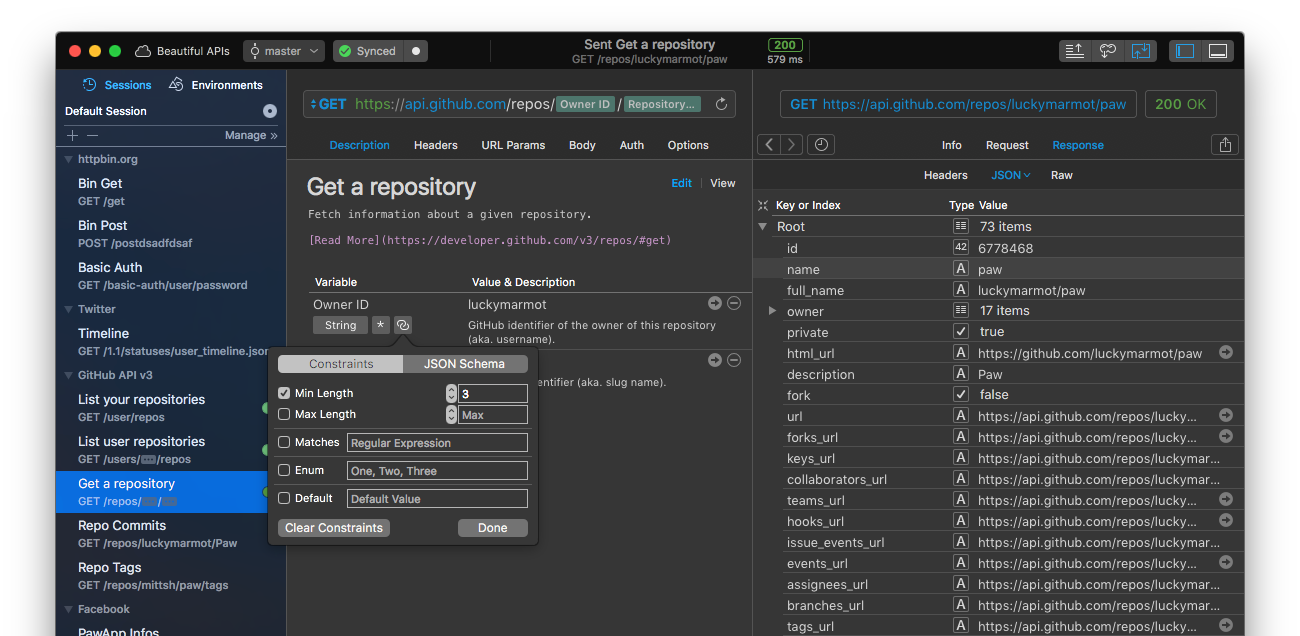

- WIDE OPEN API FOR TESTING JSON INSTALL
- WIDE OPEN API FOR TESTING JSON UPDATE
- WIDE OPEN API FOR TESTING JSON CODE
- WIDE OPEN API FOR TESTING JSON FREE
Let’s say in our project, we want to make a GET request to query a user, but we don’t want the id. Routes should be added after middlewares are loaded. However, for anything else, you’ll want custom routes, which you can have by calling the respective method on the server.

The Readme goes into a bit more detail on these.Įverything so far is fine if you want to return results from queries as-is. Previously, you could do this using the routes flag and another JSON file, but I am going to show them here instead. Running the start script will give us what we had before with the same functionality, but now we can do a lot more.įor some basic extended routes, all you need to add is the rewriter. For this, you’ll need a package.json and a server.js.įairly simple: json-server is installed as a dev dependency, and there’s a start script.Ĭonst jsonServer = require('json-server') Ĭonst router = jsonServer.router('./db.json') Ĭonst middlewares = faults() įor the server.js we need to create the server, set the database as the router, and use the default middlewares. The above approach works fine for some fake APIs, but typically, you will want requests that do more or use alternate routes.

curl -d "userId=104&name=Dan" Other request types can be used as well, but I’ll refrain from detailing those here. Doing a POST request will add new elements into the database and increment their id. You can send requests to: curl GET requests work as expected and will return data based on the query given. This call will run your database file on your localhost.
WIDE OPEN API FOR TESTING JSON INSTALL
Getting Startedįor the bare-bones basics, install json-server globally and create a JSON database named db.json where you can send requests. If you want to know why you should build a fake API, then read Building a Fake API for Testing & Development. In this post, though, I intend to cover a few of the more complex things you can do with JSON Server. You can find the basics in the documentation, and many articles regurgitate the same info.
WIDE OPEN API FOR TESTING JSON UPDATE
Simply put your configuration file inside a GitHub repository and Mocki will update it on the fly when you push changes.JSON Server is an easy and quick-to-set-up module that you can use to fake or mock an API. Version controlling your API is made easy using Mocki. Testing external dependencies can be made easier using a fake API to simulate responses and enabling development without the external service actually being up and running.
WIDE OPEN API FOR TESTING JSON FREE
You can also create your own APIs with custom data both using our free tool and the more advanced Mocki editor. Using our ready made fake APIs you can build your own applications while learning a new language. When you make changes to the API configuration, Mocki will update it automatically. A Mocki API can be defined using a configuration file that you can put inside a Git repository. This can also be applied on your mock configuration.

WIDE OPEN API FOR TESTING JSON CODE
It makes it easy to track changes in your code and if need be revert to previous versions. Version control is fundamental in all development processes. If the fake API returns the expected JSON responses, you can make sure that the functionality of the system we develop locally is doing what it is supposed to do. You could point all calls to the second system over to your fake API instead. This is where a fake JSON API can come in handy. When developing one of the systems locally you might not be able to start and run the other system on your developer machine. Let us say you have two different systems communicating. You can also create conditions for serving dynamic responses, simulated delays and errors.ĭeveloping a fake API can be useful for testing purposes as well. It lets you select response code and data to return for each endpoint. When using Mocki you can do this by using our API editor. If you for example wanted to mock the endpoints provided above in a single API, it would require the following endpoints: We created the tool to make development and testing APIs a lot easier. If you want to create your own fake API with multiple endpoints, dynamic responses and more advanced features, you can use Mocki. "description": "Mop the floor, wipe the countertop and don't forget to take out the trash!"


 0 kommentar(er)
0 kommentar(er)
